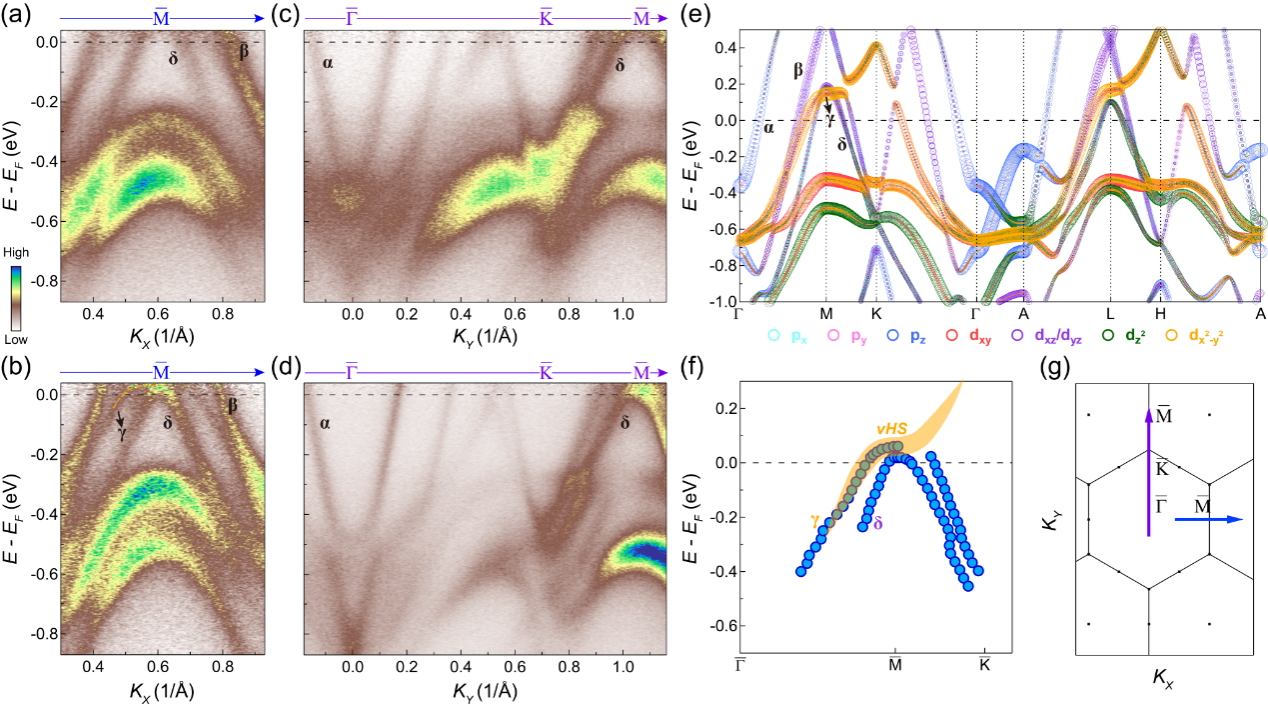Researchers Reveal Tunable Van Hoven Singularity without Structural Instability
A team led by Prof. HE Junfeng from University of Science and Technology of China (USTC) of the Chinese Academy of Sciences (CAS), together with domestic and international collaborators, discovered that the energy level of the van Hove Singularity (vHS) in the novel Ti-based kagome metal CsTi3Bi5 can be tuned without lattice structural instability. Their work was published in Physical Review Letters on July 12th as the cover article.
In kagome metal, the electronic instabilities provided by vHS usually coexist with lattice structural instabilities, making it difficult to distinguish the effect of different instabilities on charge density waves (CDW).
To understand the effect of different instabilities on CDW, the team conducted research on the novel Ti-based kagome metal CsTi3Bi5. CsTi3Bi5 has the same lattice structure as AV3Sb5 (A=K, Rb, Cs) but does not have charge density wave states. The team first studied the electronic structure of CsTi3Bi5 using high-resolution angle-resolved photoemission spectroscopy and found it in good agreement with the results of first-principles calculations. The energy position of the vHS in pristine CsTi3Bi5 was well above the Fermi level and cannot bring about electronic instability. First-principles calculations and low-temperature X-ray diffraction measurements showed no lattice instability in CsTi3Bi5.
Researchers went on to find that electrons can be introduced by Cs surface doping, enabling the modulation of the vHS in CsTi3Bi5 in a wide energy range. When the vHS approach Fermi level, it can generate electronic instabilities. At the same time, first-principles calculations showed no lattice structural instability in CsTi3Bi5 after electron doping. In this way, the team realized the decoupling of the two instabilities. CsTi3Bi5 can be a unique platform where the electronic instabilities can be modulated solely without being affected by the structural instabilities.

Evolution of CsTi3Bi5 electronic structure with Cs doping (Image by LIU Bo et al.)
The researchers also found that even if the vHS is tuned to introduce electronic instability near the Fermi energy level, it still can’t generate the energy gap in CDW in CsTi3Bi5. Thus, the electronic instability itself can’t generate charge density waves in CsTi3Bi5.
First-principles calculations further showed that during the evolution from CsV3Sb5 to CsTi3Bi5, the appearance of CDW directly corresponds to the change in the total energy of the system. CDW phase transition occurs only when the corresponding crystal structure has the lowest total energy. Therefore, lattice structural instability plays an important role in CDW phase transition in kagome metals.
This work is instructive for the further understanding of the effects of electronic instability and lattice structural instability on CDW in kagome metals.
paper link: https://doi.org/10.1103/PhysRevLett.131.026701
(Written by HUANG Rui, edited by ZHANG Yihang, USTC News Center)
Back
